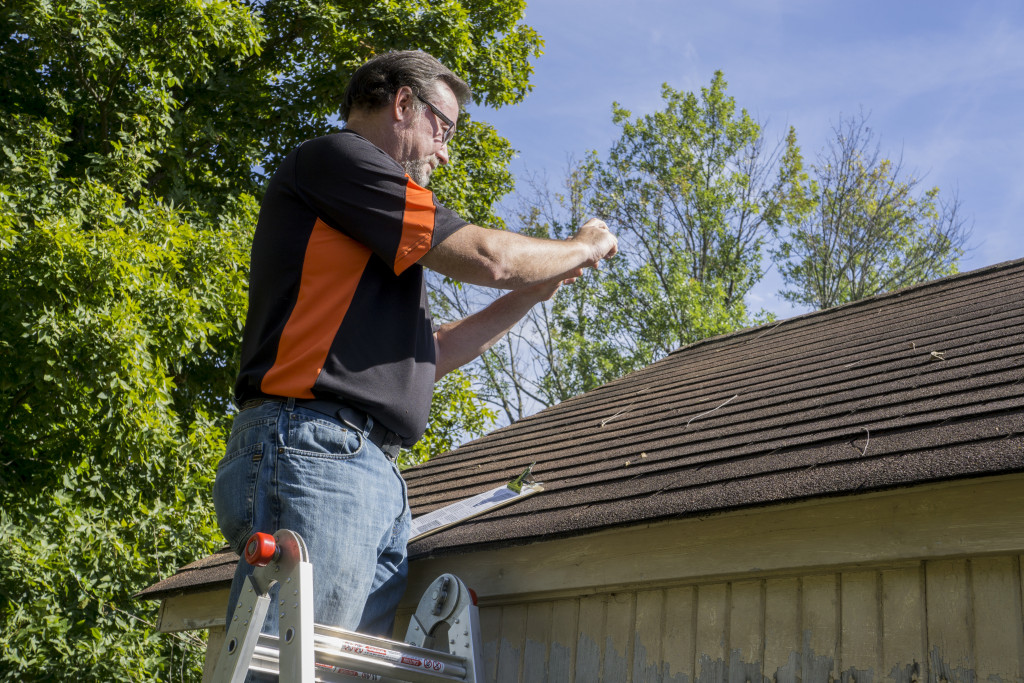- Inspect your roof for damage, and look for watermarks or signs of mold in the attic.
- Prepare for potential basement flooding by calling in professional help.
- Protect windows from strong winds and debris with shutters or plywood covers.
- Be prepared for power outages with a generator and stock up on non-perishable food and water.
- Inspect trees for cracks in the trunk and broken branches, and have a professional remove any potential hazards.
With typhoons becoming more frequent and intense, protecting your home from destructive winds, heavy rains, and storm surges is now more important than ever. A hurricane can cause significant damage to your property, leaving you with high repair costs and the burden of rebuilding your life. To help you stay safe and secure during typhoon season, here’s a list of common home damages due to typhoons and how you can protect your prized possessions.
Roof Damage
The roof is your home’s first line of defense against the typhoon. Heavy rains, strong winds, and debris can easily dislodge and damage the roof, leading to costly repairs and water intrusion. To protect your roof, make sure it is well-built and properly maintained. Keep your gutters and downspouts clean and debris-free to prevent water pooling on the roof. Here are some ways to effectively inspect your roof:
Conduct a Visual Inspection
The first step to inspecting the roof is to conduct a visual inspection from the ground around the house. Look for any visible damage on the top, such as missing shingles, cracked or curled shingles, dents, or dings. Also, check for cracks on the chimney, loose or missing gutters, or downspouts. If you notice any of these damages, make a note of them.
Inspect the Attic
The attic is another place to inspect for damages to the roof. Look for signs of water damage, such as watermarks, stains, or wet spots on the ceiling or walls. Check for any visible sunlight passing through the roof, indicating a hole in the roof. Also, check for any signs of mold or mildew growth, a sign of excess moisture. If you notice any of these signs, it could be a sign of severe roof damage.
Basement Flooding

Due to the heavy rains and storm surges, flooding is a common problem many homeowners face during typhoon season. Flooding can also risk your health and safety, besides the apparent damage to your home’s foundation, electrical wiring, and appliances.
If this happens, you must call for professional basement flooding repair services. The professionals will assess the damage and provide the best solutions for fixing the problem. They will inspect your walls, floors, and foundation to determine where the water comes from. They can then suggest preventative measures such as sump pumps or waterproofing systems that can help reduce future flooding incidents in the basement.
Window Damage
During a typhoon, your windows are vulnerable to strong winds, flying debris, and hail. Broken windows can cause water to enter your home, leading to mold growth and rotting of the wooden frames. To protect your windows, install shutters or plywood covers. If you have old or damaged windows, consider replacing them with hurricane-resistant ones or applying a transparent film to strengthen the glass.
Power Outage
Power outages are very common during typhoons and can last for days or even weeks. Without power, you won’t be able to use your appliances, charge your phone or access the internet. To prepare for a power outage, invest in a generator or a battery backup, stock up on non-perishable food and water, and have a portable charger for your phone. Keep your flashlights and candles handy, and never use a generator indoors.
Tree Damage

Trees are beautiful and provide valuable shade and fresh air, but they can become dangerous to your home and family during a typhoon. Falling trees and branches can cause significant damage to your roof or car and even injure you or your loved ones. You can inspect your trees by doing the following:
Look for Cracks in the Trunk
One of the most common signs of tree damage is cracks in the trunk. If you notice any cracks, scrutinize them for size and severity. Small cracks are not a significant concern, but larger ones may require immediate attention. If the crack is deep or compromises the tree’s stability, you may need to remove the tree.
Check the Branches
It is essential to inspect the branches for any signs of damage. If the components are broken or split, they can fall and cause potential harm to anything below them. If you notice broken limbs, prune them carefully or remove them altogether. It is always best to seek assistance from a professional tree service provider to ensure the job is done safely.
The Bottom Line
Preparing your home for a typhoon can be daunting, but it is necessary for your safety and well-being. By taking the necessary precautions, you can protect your prized possessions and minimize the typhoon’s damage. Always listen to the authorities and stay informed about the latest weather updates. Stay safe, and stay prepared.






